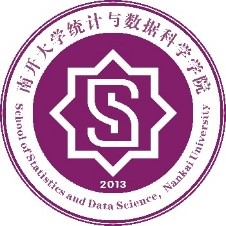
统计与数据科学学院
------------------------------------------------------------------------------------------
学术讲座

Jian Huang
Professor
Department of Statistics and Actuarial Science
University of Iowa
Professor Huang’s current research interests include high-dimensional statistics, bioinformatics, and statistical machine learning. Professor Huang has made contributions through innovative research and development of methods and algorithms to the areas of high-dimensional statistics, computational statistics, statistical genetics and genomics, semiparametric models, and survival analysis. Many of his publications appeared in top-ranked journals, including Annals of Statistics, Bioinformatics, Biometrics, Biometrika, Econometrika, Journal of the American Statistical Association, Journal of Machine Learning Research, PNAS, and The American Journal of Human Genetics. Professor Huang was bestowed a National Institutes of Health Research Scientist Development Award in 1998 and elected a Fellow of the American Statistical Association in 2009. He served as associate editor of Annals of Statistics, Statistica Sinica and Statistics and Its Interface. Professor Huang has been designated a Highly Cited Researcher from 2015 to 2019 by Clarivate Analytics, ranking among the top one percent of researchers from 2003 to 2019, for most cited papers in the field of Mathematics.
Topic: Sufficient and Disentangled Representation Learning
Abstract: Representation learning is a fundamental problem in machine learning and artificial intelligence. We propose a novel representation learning approach called sufficient and disentangled representation learning (SDRL). With SDRL, we seek a data representation that maps the input data to a lower-dimensional space with two basic properties: sufficiency and disentanglement. First, the representation is sufficient in the sense that the original input data is conditionally independent of the response or label given the representation. Second, the representation is maximally disentangled with mutually independent components and is rotation invariant in distribution. We show that such a representation always exists under mild conditions on the input data distribution based on optimal transport theory. We formulate an objective function characterizing conditional independence and disentanglement. This objective function is then used to train a sufficient and disentangled representation with deep neural networks. We provide strong statistical guarantees for the learned representation by establishing an upper bound on the excess error of the objective function and show that it reaches the nonparametric minimax rate under mild conditions. We also validate the proposed method via numerical experiments and real data analysis.
Date & Time: Nov 17, 2020 09:30 AM (GMT+8)
ZOOM Meeting ID: 934 3833 0141
Invited by: Dongxiao Han, Ph.D.